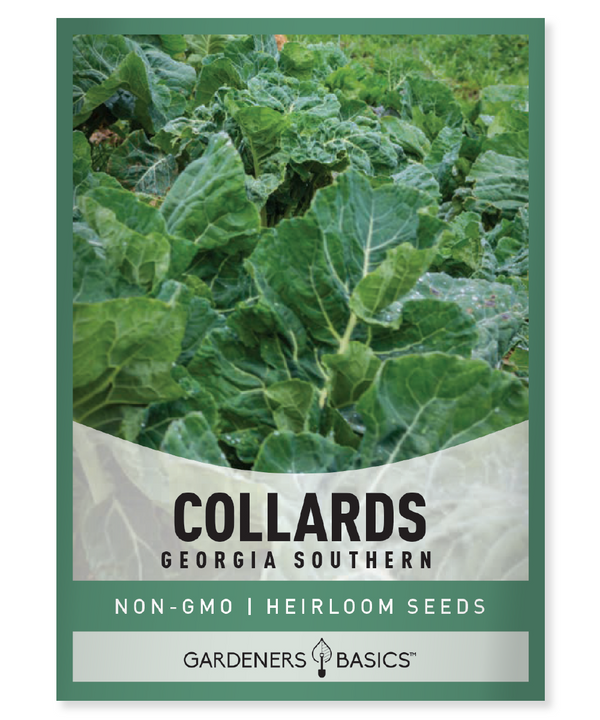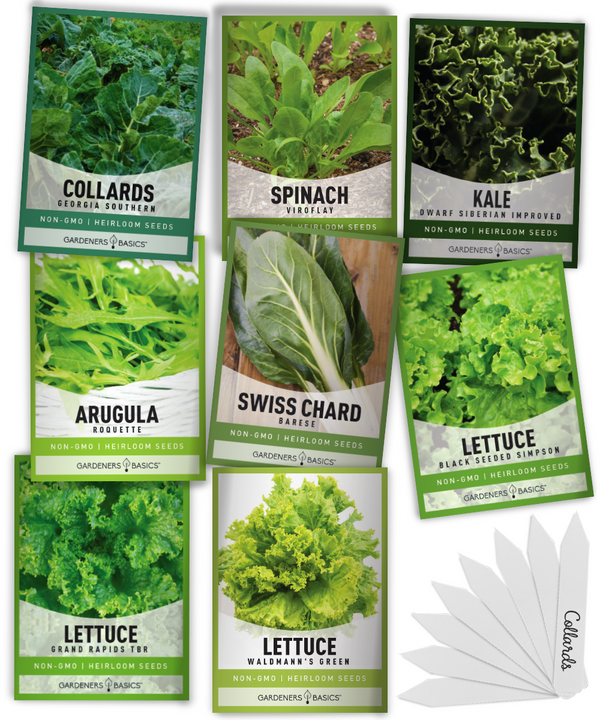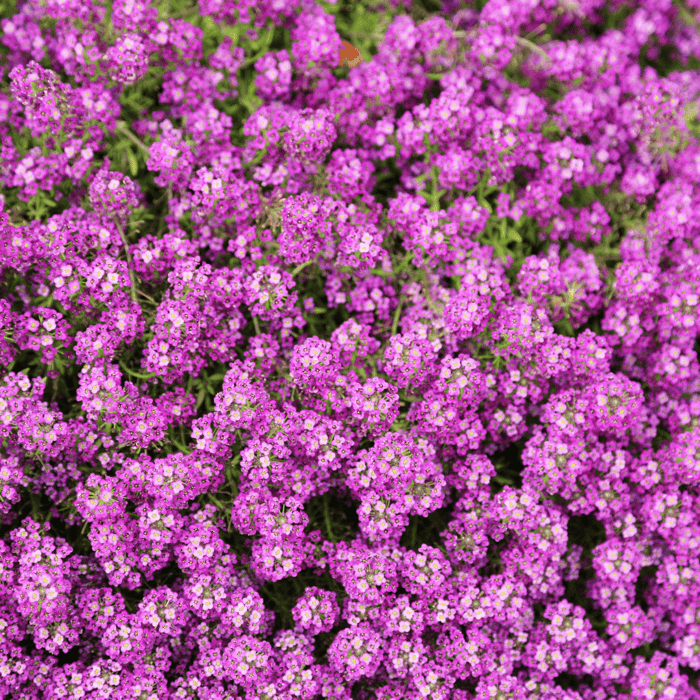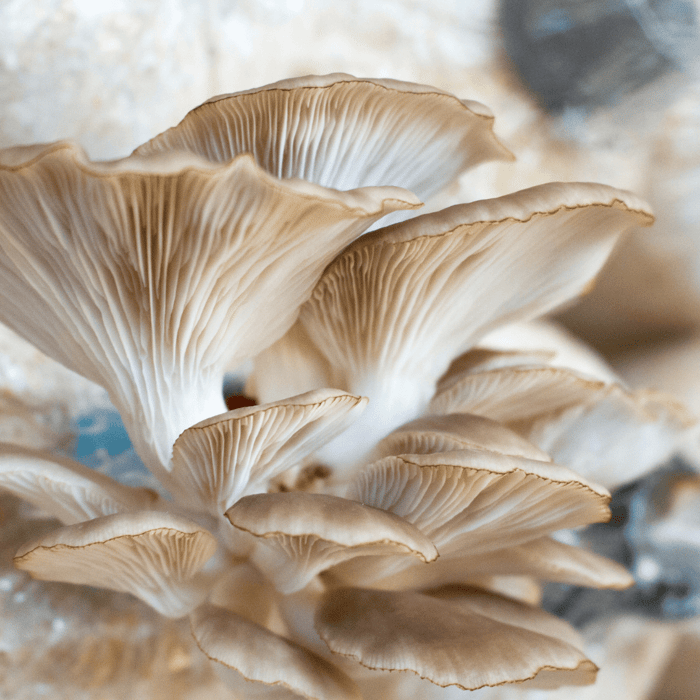Collard greens (Brassica oleracea) are a nutritious and versatile leafy green vegetable that can be a great addition to any home garden. This step-by-step guide will teach you everything you need to know about how to grow collard greens from seeds, ensuring a successful harvest.
Table of Contents
- Introduction to Collard Greens
- Plant Characteristics
- Choosing the Right Collard Green Seeds
- Preparing the Soil and Planting Area
- Sowing Seeds Indoors or Direct Sowing
- Caring for Your Collard Greens
- Pest and Disease Control
- Harvesting Collard Greens
Introduction to Collard Greens
Collard greens, a member of the Brassica family, have been a staple in many gardens and kitchens for centuries. They are known for their large, dark green leaves and robust flavor. Collard greens are a cool-season vegetable ideal for early spring and fall planting. They can even tolerate light frosts, enhancing the flavor of collard greens.
Some benefits of growing collard greens include:
- High in vitamins A, C, and K
- Good source of calcium, iron, and fiber
- Cold-hardy and frost-tolerant
- Continual harvesting throughout the growing season
- Versatile in cooking: can be steamed, sautéed, or used in soups and stews
Plant Characteristics
Before you start planting collards, familiarize yourself with their basic characteristics:
- Native: Europe
- Family: Brassicaceae
- Genus: Brassica
- Common Name: Collard Greens
- History of the Seed: Cultivated for over 2,000 years
- Days till Maturity: 60-75 days
- Planting Depth: ¼-½ inch deep
- Plant Spacing: 12-18 inches apart
- Days to Germination: 5-10 days
- Indoors or Direct Sown: Both
- Full Sun or Partial Shade: Full sun to light shade
- When to Harvest: When leaves reach the desired size
- Plant Height: 2-3 feet
- Plant Width: 1-2 feet
Collard greens are hardy and adaptable, making them suitable for various growing conditions. They are also relatively low maintenance, requiring only basic care to thrive.
Georgia Southern Collard Seeds

$2.49
Georgia Southern Collard Seeds – Heirloom, Non-GMO, Non-Hybrid, Open-Pollinated for Tender, Flavorful Greens Grow your own delicious, nutrient-packed Georgia Southern Collards with our premium heirloom, non-GMO, non-hybrid, and open-pollinated seeds. This classic variety of collards is known for its tender, flavorful,… read more
Choosing the Right Collard Green Seeds
Several collard green varieties are available on the market, ranging from heirloom seeds to hybrids. Some popular heirloom seeds include 'Georgia Southern,' 'Champion,' 'Morris Heading,' and 'Vates.' When selecting your collard green seeds, choose a reputable seed company like Gardeners Basics. This ensures you receive high-quality seeds with a high germination rate.
Factors to consider when selecting seeds:
- Disease resistance
- Flavor preference
- Growth habit
- Climate adaptation
- Days to maturity
Preparing the Soil and Planting Area
Soil Requirements
Collards prefer well-drained soil with a pH between 6.0 and 7.0. They thrive in fertile, loamy soil rich in organic matter. Before planting, work aged compost or well-rotted manure into the soil to improve fertility and drainage.
Soil preparation tips:
- Test soil pH and adjust if necessary
- Add organic matter to improve soil structure
- Break up any compacted soil or clumps
- Ensure proper drainage to prevent waterlogging
Planting Area
Choose a location with full sun exposure, as collards need at least six hours of sunlight daily. However, they can tolerate light shade if necessary. Space your rows 30 inches apart for proper airflow and room for the plants to grow.
Tips for selecting a planting area:
- Consider sun exposure throughout the day
- Avoid low-lying areas prone to flooding
- Ensure adequate spacing between rows
- Rotate planting location to reduce disease risk
Sowing Seeds Indoors or Direct Sowing
Starting Seeds Indoors
You can start your collard green seeds indoors about six weeks before the last expected frost date. Sow seeds ¼-½ inch deep in seed trays or small pots filled with a well-draining seed-starting mix. Place the trays or pots warmly around 70-75°F (21-24°C). Keep the soil consistently moist but not soggy. Seedlings should emerge within 5-10 days.
Once the seedlings have developed two sets of true leaves, transplant them into individual containers to encourage strong root growth. You can gradually harden off the seedlings by exposing them to outdoor conditions for a few hours each day before transplanting them outside.
Indoor seed starting tips:
- Use a high-quality seed-starting mix
- Provide adequate light and warmth
- Maintain consistent soil moisture
- Gradually acclimate seedlings to outdoor conditions
Leafy Green Salad Seeds | 8 Variety Pack

$15.95
Ultimate 8 Leafy Green Salad Seeds Variety Pack for Fresh, Homegrown Salads Introducing our 8 Leafy Green Salad Seeds Variety Pack, perfect for growing fresh, nutrient-dense greens right at home! This carefully curated selection of leafy green seeds includes heirloom,… read more
Direct Sowing
You can also direct sow collard green seeds in your garden once the soil temperature has reached at least 45°F (7°C). Plant seeds ¼-½ inch deep and 12-18 inches apart in rows spaced 30 inches apart. Water the area thoroughly after planting and maintain consistent moisture throughout germination.
Direct sowing tips:
- Wait until the soil temperature is warm enough
- Space seeds and rows appropriately
- Keep the soil moist during germination
- Thin seedlings as necessary for proper spacing
Caring for Your Collard Greens
Watering
Collards prefer evenly moist soil throughout the growing season. Provide approximately 1-1.5 inches of water per week through rainfall or supplemental irrigation. Avoid overhead watering to minimize the risk of diseases.
Watering tips:
- Water deeply to encourage deep-root growth
- Use drip irrigation or a soaker hose for efficient watering
- Water in the morning to reduce disease risk
- Monitor soil moisture to avoid over- or underwatering
Fertilizing
Fertilize collard greens with a balanced, all-purpose fertilizer every 4-6 weeks throughout the growing season. You can also side-dress the plants with aged compost or well-rotted manure for additional nutrients.
Fertilizing tips:
- Apply fertilizer according to package instructions
- Use organic amendments to improve soil fertility
- Avoid excessive nitrogen, which can lead to rapid growth and weak plants
- Monitor plant growth and adjust fertilization as needed
Thinning Seedlings
Once the seedlings have reached 2-3 inches in height, thin them to a spacing of 12-18 inches apart. This will ensure proper airflow and prevent overcrowding, which can lead to disease issues.
Thinning tips:
- Thin seedlings during the cooler part of the day
- Be gentle to avoid damaging nearby seedlings
- Keep the strongest, healthiest seedlings
Mulching
Applying a 2-3 inch layer of organic mulch, such as straw, shredded leaves, or wood chips, around the base of the plants can help conserve moisture, suppress weeds, and regulate soil temperature.
Mulching tips:
- Choose an appropriate organic mulch material
- Apply mulch evenly around the plants
- Avoid piling mulch against the plant stems to prevent rot
- Replenish mulch as needed throughout the growing season
Pest and Disease Control
Collard greens can be susceptible to a variety of pests and diseases. Row covers can effectively protect your plants from common pests such as aphids, cabbage loopers, and flea beetles.
Regularly inspect the leaves of collard greens for signs of pests or diseases. If you notice any issues, promptly remove affected leaves and apply the appropriate organic or chemical control measures.
Pest and disease control tips:
- Use row covers to protect plants from pests
- Monitor plants regularly for signs of problems
- Practice good sanitation by removing debris and spent plants
- Rotate crops to reduce the risk of soil-borne diseases
Harvesting Collard Greens
Collard greens can be harvested once the leaves have reached a size suitable for eating, typically 8-10 inches long. Young leaves are tender and have a milder flavor, while older leaves are tougher and more bitter. Harvest leaves from the bottom of the plant upward, as this promotes new growth.
You can continue to harvest collard greens throughout the growing season if the plants produce new leaves. If you live in an area with mild winters, collard greens can grow and have leaves even after light frosts. In fact, frost can enhance the flavor of collard greens, making them sweeter and more tender.
Harvesting tips:
- Harvest leaves when they are young and tender for the best flavor
- Use a sharp knife or scissors to cut leaves
- Wash harvested leaves thoroughly before using
- Store fresh collard greens in the refrigerator for up to a week
Conclusion
Growing collard greens from seeds is a rewarding experience that can provide you with a bountiful harvest of nutritious, flavorful greens. By following this comprehensive guide, you'll be well-equipped to grow collard greens successfully in your home garden. Enjoy the satisfaction of sowing seeds, nurturing your plants, and harvesting fresh collard greens for your family and friends.
 Frequently Asked Questions - How to Grow Collard Greens from Seeds
Frequently Asked Questions - How to Grow Collard Greens from Seeds
Q1: When is the best time to plant collard green seeds?
A1: The best time to plant collard green seeds depends on your climate. Generally, they can be started indoors 6 weeks before the last expected frost date and transplanted outdoors after the danger of frost has passed. Alternatively, you can direct sow seeds in early spring or fall.
Q2: How long does it take for collard greens to grow from seed?
A2: Collard greens typically take 60-75 days from seed to harvest, depending on the variety and growing conditions.
Q3: How much space do collard greens need to grow?
A3: Collard greens should be spaced 12-18 inches apart in rows 30 inches apart. This allows for proper airflow and room for the plants to grow.
Q4: Can collard greens grow in partial shade?
A4: Collard greens prefer full sun, but they can tolerate light shade. Ensure they receive at least six hours of sunlight daily for optimal growth.
Q5: How often should I water my collard greens?
A5: Collard greens prefer evenly moist soil. Provide approximately 1-1.5 inches of water per week through rainfall or supplemental irrigation.
Q6: What pests and diseases affect collard greens?
A6: Collard greens can be susceptible to pests like aphids, cabbage loopers, and flea beetles, as well as diseases such as black rot and clubroot. Employ preventative measures like row covers and crop rotation to reduce the risk of pest and disease issues.
Q7: Can I harvest collard greens after a frost?
A7: Yes, collard greens are frost-tolerant and can be harvested even after light frosts. In fact, frost can enhance the flavor of collard greens, making them sweeter and more tender.







